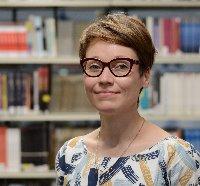Alexandra Mitchell is Archivist at the University of Salford. She attended IDCC 2020 with support from the DPC's Career Development Fund which is funded by DPC Supporters.
How do we choose what digital preservation strategy to use? When I was asked by the DPC to select a paper on which to write a blog post I naively thought I would come out of this with some answers. Instead, Micah Altman’s paper highlighted just how complex digital preservation can be and any approach taken by an institution or indeed individual must take a constellation of factors into consideration.
Micah and Richard Landau at the Massachusetts Institute of Technology have developed a framework to be used as an optimisation tool to help curators of digital content decide what digital preservation strategies to use. Most of us look to ‘best-practice’ guidance. However, as Micah tells us, in the digital world the economy of long-term access is complicated. Whilst some things have got cheaper – in the case of storage – other things have not, and institutions differ in their budgets and vulnerabilities. The strategy you choose is in fact a negotiation based on a perception and awareness of various risks, whether they be at the hardware, local, institution or global level - and indeed cost.
Micah and Richard have used the framework and produced thousands of simulations. Using the example of ‘multiple copies’, their investigations concluded that keeping more copies is an effective strategy but only if you audit frequently. As professionals we know that we need to store more than one copy, and indeed the most often quoted number is three. However, the modelling shows that eight copies is the optimal number when combined with quarterly audits to ensure that the material is preserved for 100 years. Without auditing, 20 copies would need to be created and kept in order to prevent loss over the same period.
As the sole archivist working in an institution which is at the beginning of planning out its digital preservation strategy my thoughts are turned to how sustainable and indeed cost effective these approaches are. We are encouraged in all areas of professional and personal life to consider the environmental impact of our actions. Should this also be a factor when deciding what digital preservation strategy to use and what is the impact if we decide to keep more than three copies? In an age where data is ever increasing, and we are reaching capacities in storage – an issue raised in a lightning talk by JISC’s Paul Stokes – how and should this effect the digital preservation strategies to use?
My other concern is around the process of auditing. I assume in most organisations this will be automated using appropriate and powerful software. But for organisations employing a ‘parsimonious approach’ to digital preservation, surely the choice between either keeping more copies or auditing more frequently is the same – one is costly the other resource intensive and there is little to choose between them.
Finally, the paper also touched on compression as an effective preservation strategy which isn’t something I have considered before.
When planning digital preservation, organisations need to think broadly and widely about the environment and threats within which they are operating and the resources they have available to make that work effective.
The framework is open source, and the figures, data and code are all available on GitHub at https://github.com/MIT-Informatics/PreservationSimulation. The research paper presented at the conference is available via Cornell University at https://arxiv.org/abs/1912.07908 (date accessed 6 March 2020).
The Career Development Fund is sponsored by the DPC’s Supporters who recognize the benefit and seek to support a connected and trained digital preservation workforce. We gratefully acknowledge their financial support to this programme and ask applicants to acknowledge that support in any communications that result. At the time of writing, the Career Development Fund is supported by Arkivum, Artefactual Systems Inc., CAE Technology, Formpipe, Libnova, Max Communications, MirrorWeb and Preservica. A full list of supporters is online here.










































































































































